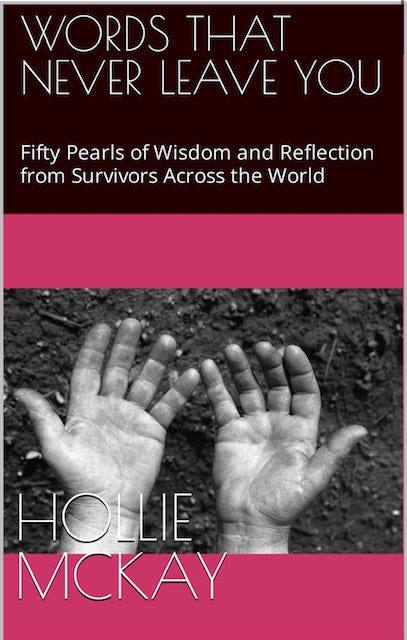More and more friends started receiving cancer diagnosis younger and younger. I was determined to find out why.
Cancer used to be connected almost entirely to old age. What changed?
It isn’t just your imagination. More and more people under the age of 50 – even 40 and 30 – are being diagnosed with cancer. I can’t count on two hands how many friends and acquaintances have received such chilling pronouncements from their doctor’s office in recent years. Questions whirled in my head. What on earth is going on?
For around three decades, cancer has been on a steady rise in those under 50, including cancer of the breast, bowel, esophagus, kidney, prostate, thyroid, stomach and pancreas. According to data from the National Cancer Institute (NCI), such cases have grown by 18% in the last twenty years while slightly falling in older adults, encompassing all genders, races, ethnicities, and organs. Worse, the type of cancer afflicting the young is shown to be more aggressive than those in older individuals. Some have even dubbed this the “early-onset cancer epidemic.”
Scientists have yet to pinpoint exactly why this is all happening. But there are theories we can’t ignore.
First, there is the obvious factor that in modern times, more people are getting diagnosed earlier. However, what is disturbing is that cancer is considered to take decades to develop as cells gradually mutate, raising the question of whether those diagnosed young could have been exposed to such variations in early childhood or even in the womb.
Some more disturbing pointers:
· According to the American Cancer Society (ACS), 20% of bowel cancer diagnoses in 2019 were in patients under the age of 55. This is about double the rate of 1995, and advanced disease rates in people under 50 have been rising annually by about 3%.
· The incidence of invasive breast cancer has been rising since 2004. Most of this change is due to an increase in the prevalence of regional or distant stage II to IV breast cancer among women between the ages of 25 and 39. In recent years, there have been 12,000 cases of invasive breast cancer among adolescents and young adults (AYA).
· As well as being more likely to be diagnosed with late-stage and aggressive breast cancer, young women are also more likely to die from it. Also, their chances of recurrence are higher. However, the rise of advanced breast cancer in young women cannot be related to prominent genetic changes in the population since the increases have occurred only within the past three decades, which researchers deemed too fast for a genetic shift.
While not politically appetizing to illuminate, obesity and lifestyle factors need to be at the top of the agenda discussion. With each generation, and especially in children, rates of overweight and obesity in the United States are rising. Body fat is shifting and is constantly pumping out estrogen and other hormones. While we need some to protect our vital organs, too much is problematic. Excess body fat can malfunction and cause inflammation, enhancing the risk of cancer development.

Researchers from Harvard Medical School and Brigham and Women’s Hospital say obesity has contributed more to early-onset cancer than other types but also peg the blame on heavily processed Westernized diets, sugar-laden drinks, sedentary lifestyles, an increase in type 2 diabetes and other metabolic conditions and the rapidly expanded use of diagnostic imaging which release minute amounts of carcinogenic radiation and can spur blood and bone cancers. Moreover, antibiotics are being floated as a problematic potential cause, with their use skyrocketing among almost all segments of the population since the 1950s, and scientists have drawn connections between cannabis use and testicular cancer in men.
Scientists speculate environmental factors as a possible cause but admit they need help finding in-depth studies examining chemicals in plastic bottles and the impact of processed diets. After all, nobody wants to run afoul of the corporate lobbying behemoth.
Breast cancer researchers also point to the notion that more women are delaying their first pregnancy, theorizing that after the age of 35, “breasts have had more time to accumulate abnormal cells. Changes in the breast that occur during pregnancy can accelerate the development of those abnormal cells into cancer.”
And the fact that, as a population overall, we are growing taller may also be a risk factor.
All in all, there is a lot of speculation but little affirmed data to date. So much money is thrown into research and cures, and yet cancer is so poorly understood. It doesn’t help that the healthcare system in the United States profits off the sick and offers little in the realm of prevention. The notion that breast cancer, for one, is the most common among young women, and yet the only policy we have in 2024 to amplify awareness is “do a hand check for lumps,” is disturbing, with most insurances refusing to cover mammograms under the age of 40 or even 50. They’ll tell you the psychological toll of false positives isn’t worth it. It is also important to note that moneymakers will tell you that even though colorectal cancer is on the rise in young people, from their purview, the incidence is too low to justify routine colonoscopies for early detection.
Making matters worse, bear in mind that younger patients are more likely to face a more significant financial burden for cancer treatment, as they tend to have lower incomes, fewer savings, and higher deductible health insurance plans. As a result of where they are in their lives, young survivors suffer higher rates of bankruptcy and financial hardship. Because they are routinely diagnosed at an advanced stage, the prognosis and pressure are often far worse. Many say they struggle to get doctors, because of their age, to take their complaints seriously.
It may be a long time, yet before we have a proven picture as to what is causing this young cancer trend, it shows no indications of stopping. We need long-term studies and a commitment from the healthcare industry to do better – but sadly, don’t expect a shift anytime soon.
In the meantime, if you believe something is wrong – it probably is. The body doesn’t lie. And fight for the answers and respect you deserve.
PLEASE CONSIDER A PAID SUBSCRIPTION TO THIS SUBSTACK TO HELP KEEP INDEPENDENT, AGENDA-FREE WRITING AND JOURNALISM ALIVE. THANK YOU SO MUCH FOR YOUR SUPPORT.
For speaking queries please contact meta@metaspeakers.org
For ghostwriting, personalized mentoring or other writing/work-related queries please contact hollie@holliemckay.com
Follow me on Instagram and Twitter for more updates
HOLLIE’S BOOKS (please leave a review)
** Short read of meaningful lessons gleaned from the ordinary forced to become extraordinary
Order your copy of “Afghanistan: The End of the US Footprint and the Rise of the Taliban Rule” due out this fall.
For those interested in learning more about the aftermath of war, please pick up a copy of my book “Only Cry for the Living: Memos from Inside the ISIS Battlefield.”
If you want to support small businesses:






Wild WSJ article on this from a few months back. https://www.wsj.com/health/healthcare/cancer-young-people-doctors-baffled-49c766ed?st=0mjd3zw7140cbhb&reflink=desktopweshare_permalink
Kinda personally assume our accumulated generations of wanton experimentation with synthetic materials, chemicals, and so forth over the past century without any foresight or decent controls I'd largely to blame... but hey, being able to sustain something is silly, it's far more important to at least FEEL like we're maintaining positive perpetual growth/progress in life quality and economics...
hmm, what untested substance did the whole world inject themselves with....?